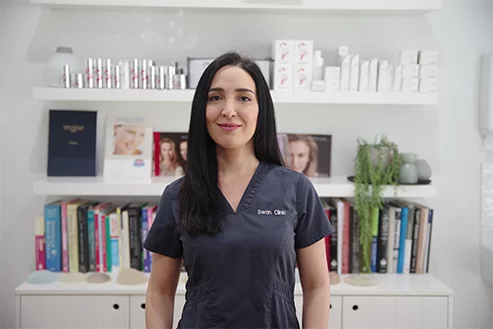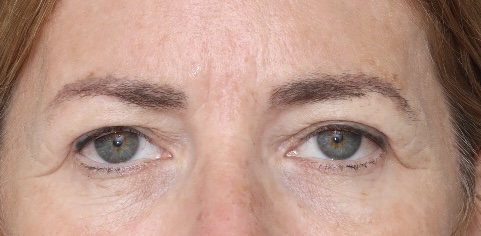BROWPLASTY
A Browplasty, is a surgical procedure that aims to reposition the eyebrows by addressing changes in skin elasticity and muscle tone that may occur with age. Over time, the forehead muscles and skin can become lax, leading to a lowered brow position and the formation of creases across the forehead and between the eyebrows.
Types of Browplasty Procedures
Different brow lift techniques are available to address varying anatomical needs and goals. The choice of technique depends on factors such as brow position, forehead height, hairline shape, and individual preference. During consultation, your surgeon will assess your facial structure and recommend the most suitable option.
1. Traditional Brow Lift (Coronal Brow Lift)
This method involves an incision made across the top of the scalp, typically hidden within the hairline. It allows for broad adjustment of the forehead and brow area. Due to the extent of dissection, it may involve a longer recovery period and is generally more appropriate for patients with low hairlines.
2. Temporal or Limited Incision Brow Lift
This technique targets the outer portion of the brow using small incisions placed at the temples, just behind the hairline. It is often chosen for patients with mild brow descent or those seeking subtle changes in the lateral brow region.
3. Direct Brow Lift
In a direct brow lift, an incision is placed just above the eyebrows. This approach is more commonly considered in patients with pronounced brow descent and may be particularly appropriate for individuals with heavier brow tissue. The scar is placed within the upper edge of the eyebrow and is typically well-concealed in those with thicker eyebrow hair.
4. Mid-Forehead Lift (Pretrichial or Midline Brow Lift)
This technique involves incisions made at the hairline, making it suitable for individuals with forehead laxity or central brow descent. It can also be considered when preservation of the existing hairline is desired.
Am I a Candidate for a Browplasty?
Determining suitability for a brow lift involves a comprehensive assessment by a qualified plastic surgeon. However, individuals who may be considered suitable typically include those who:
- Have a low or descending brow position that may contribute to changes in upper facial appearance or function
- Are in good general health and do not have medical conditions that could interfere with healing or increase surgical risk
- Have realistic expectations and a clear understanding of what the procedure may be able to achieve
During your consultation, your surgeon will assess your facial anatomy, medical history, and aesthetic concerns to determine if a brow lift is an appropriate treatment option.
Potential Risks – Browplasty Surgery
As with all surgical procedures, a brow lift carries general and procedure-specific risks. Understanding these potential risks is an important part of making an informed decision:
- Infection at the incision sites, which may require antibiotics or further treatment
- Bleeding or haematoma (a collection of blood under the skin), which may need to be drained
- Scarring, which may be visible along or behind the hairline, depending on the surgical approach
- Nerve injury, particularly to sensory nerves in the forehead or scalp, which can lead to numbness, tingling, or altered sensation (usually temporary, but in rare cases may be permanent)
- Temporary or permanent hair loss around the incision lines, especially if incisions are made along the hairline
- Asymmetry in eyebrow position or forehead contour
- Changes in skin sensation, including numbness or sensitivity in the scalp, forehead, or around the eyes
- Skin irregularities or contour changes, particularly if healing is uneven
- Delayed wound healing, especially in individuals who smoke or have certain medical conditions
- Anaesthesia-related risks, including allergic reactions or complications from sedation or general anaesthesia
Recovery and Aftercare – Browplasty Surgery
Recovery experiences vary between individuals and depend on the technique used.
- Swelling and bruising around the forehead and eyes are common and typically improve over 1–2 weeks
- Tightness, numbness, or tingling in the scalp or forehead area may occur and usually resolves over time
- Mild to moderate discomfort can be expected and is usually manageable with prescribed or over-the-counter pain relief
- Cold compresses may help reduce swelling in the early stages (as directed by your surgeon)
- Sleeping with the head elevated for the first week or more can help minimise swelling
- Dressings or bandages may be applied after surgery and are usually removed within a few days
- Strenuous activities, heavy lifting, and bending should be avoided for at least 2–3 weeks or as advised by your surgeon
- Driving should only be resumed when you are no longer taking strong pain medication and can move comfortably
- Smoking and alcohol should be avoided during recovery, as they can impair healing and increase the risk of complications
- Scar care instructions will be provided and should be followed to support optimal healing
- Final results may take several months to fully appear as swelling resolves and tissues settle
- Follow-up appointments are essential to monitor healing, ensure symmetry, and address any concerns
If you have any questions or wish to discuss Browplasty options, please contact our clinic to schedule a consultation with Dr Reema Hadi.
If you would like more information on Browplasty, you can visit the Australian Society of Plastic Surgery
Before and After Photos
Real patient results from our expert procedures




